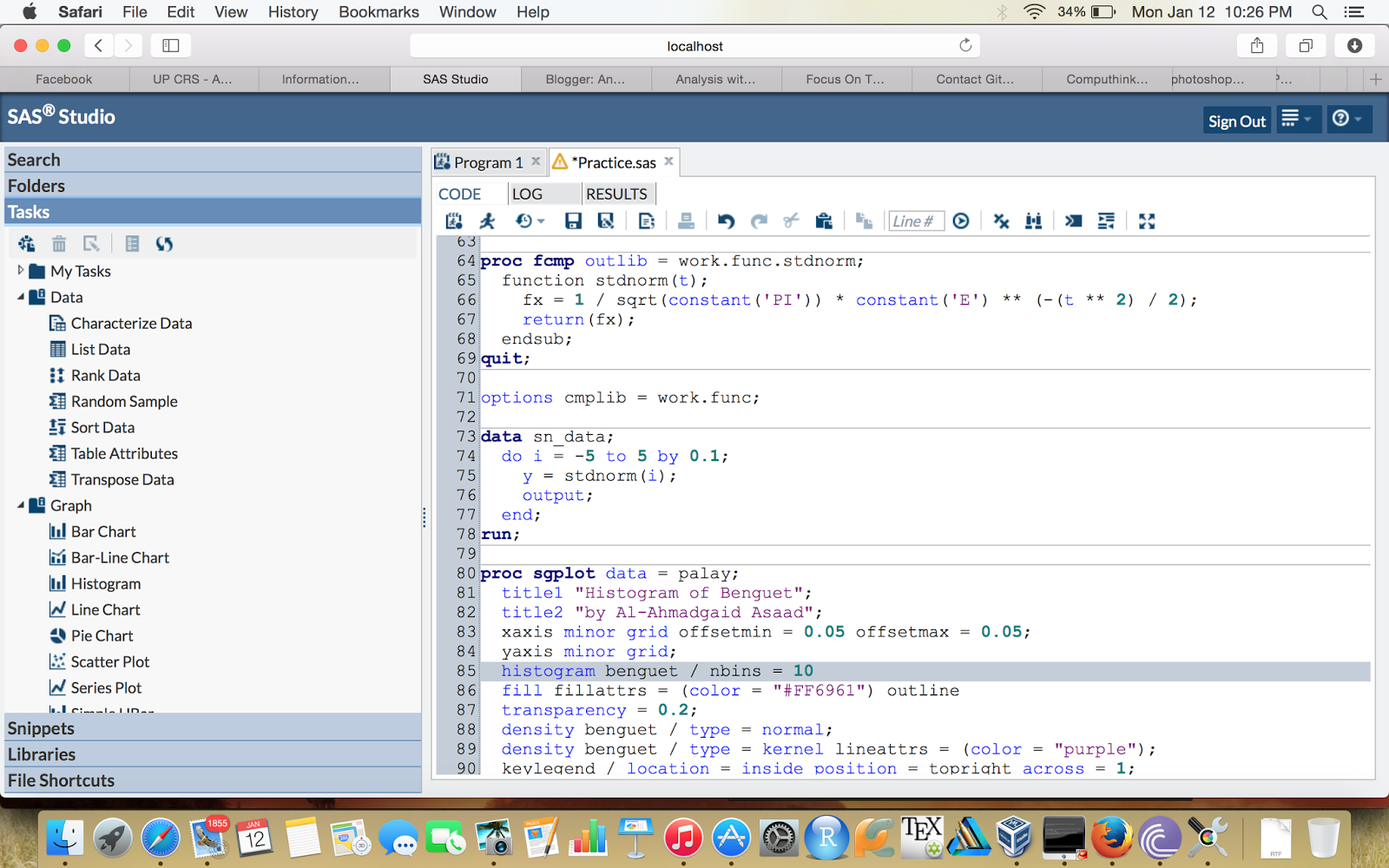

Calculating the Sample Size for a Test of Proportions 4. Chapter 15: Computing Power and Sample Size 1. Analyzing Tables with Low Expected Values 11. Computing Chi-Square from Frequency Dataġ0. Using Formats to Reorder the Rows and Columns of a Table 9. Introduction Describing the Salary Data Set Computing One-Way Frequencies Creating Formats Producing One-Way Tables with Formats Reviewing Relative Risk, Odds Ratios, and Study Designs 7. Chapter 14: Analyzing Categorical Data 1. Running a Model with Three Classification Variables 8. Using a Continuous Variable as a Predictor in a Logistic Model 7. Running a Binary Logistic Regression Model with a Single Predictor Variable 4. Using a Categorical Variable as a Predictor in Model 12.

Demonstrating the Effect of Multi-Collinearity 10. Introduction Getting an Intuitive Feel for Regression Describing Simple Linear Regression Understanding How the F Value Is Computed Investigating the Distribution of the Residuals Measures of Influence Demonstrating Multiple Regression Running a Simple Linear Regression Model with Endurance and Pushups 9. Chapter 12: Simple and Multiple Regression 1. Generating Spearman Non-Parametric Correlations 7. Introduction Using the Statistics Correlation Task Generating Correlation and Scatter Plot Matrices Correlations among Variables in the Fish Data Setĥ. Introduction Performing a Two-Way Analysis of Variance Reviewing the Diagnostic Plots Interpreting Models with Significant Interactions Investigating the Interaction Conclusion Chapter 10 Exercises Introduction Getting an Intuitive Feel for a One-Way ANOVA Performing a One-Way Analysis of Variance Performing More Diagnostic Plots Performing a Nonparametric One-Way Test Conclusion Chapter 9 Exercisesġ3. Chapter 9: Comparing More Than Two Means (ANOVA) Introduction Getting an Intuitive Feel for a Two-Way t Test Unpaired t Test (t Test for Independent Groups) Describing a Two-Sample t Test Nonparametric Two-Sample Tests Paired t Test Conclusion Chapter 8 Exercisesġ2. Introduction Getting an Intuitive Feel for a One-Sample t Test Performing a One-Sample t Test Nonparametric One-Sample Tests Conclusion Chapter 7 Exercisesġ1. Computing Frequencies for Categorical VariablesĦ. Adding a Classification Variable in the Summary Statistics Tab 1. Investigating the Distribution of Horsepower 4. Generating Descriptive Statistics for Continuous Variables 3. Chapter 6: Descriptive Statistics – Univariate Analysis 1. IntroductionĮxploring the Utilities Tab Importing Data from an Excel Workbook Listing the SAS Data Set Importing an Excel Workbook with Invalid SAS Variable Names Importing an Excel Workbook That Does Not Have Column Headings Importing Data from a CSV File Shared Folders (Accessing Data from Anywhere on Your Hard Drive) Conclusionĩ. Introduction Using the Built-in Tasks Taking a Tour of the Navigation Pane Exploring the LIBRARIES Tab ConclusionĨ.
#Sas university edition how to change to numeric download
How to Download SAS University Edition 3.

Chapter 3: What Is SAS University Edition? 1.

Introduction Double-Blind, Placebo-Controlled Clinical Trials Cohort Studies Case-Control Studies ConclusionĦ. Overview Descriptive Statistics Inferential Statistics Summary of Statistical Termsĥ. Chapter 1: Descriptive and Inferential Statistics 1. What Should You Know about the Examples? 1.


 0 kommentar(er)
0 kommentar(er)
